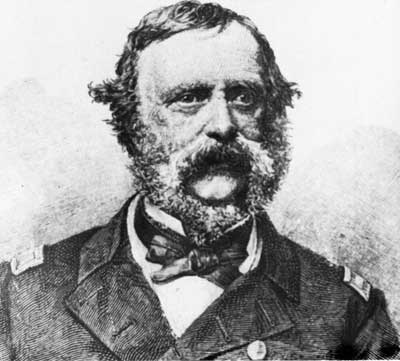|
FORT SUMTER National Monument |
 |

Rear Adm. Samuel F Du Pont.
From Johnson, The Defense of Charleston Harbor.
Charleston and
the Federal Blockade— 1861-63
With Fort Sumter in Confederate hands, the port of Charleston became a most irritating loophole in the Federal naval blockade of the Atlantic coast—doubly irritating because at Charleston "rebellion first lighted the flame of civil war." As late as January 1863, it was reported that "vessels ply to and from Charleston and Nassau [Bahamas] with the certainty and promptness of a regular line." In 2 months of the spring following, 21 Confederate vessels cleared Charleston and 15 came in. Into Charleston came needed war supplies; out went cotton in payment.
Capture of Port Royal Harbor on November 7,1861, by a Federal fleet under Capt. Samuel F. Du Pont, however, had made possible land and sea operations against Charleston. In June 1862, an attempt was made by Maj. Gen. D. H. Hunter to push through to Charleston by James Island on the south. This ended in Union disaster at Secessionville. Meanwhile, the Monitor-Merrimac action in Hampton Roads had indicated the feasibility of a naval "ironclad" expedition against Fort Sumter, the key to the harbor. Sumter, now largely rebuilt, had become a formidable work armed with some 95 guns and garrisoned with upwards of 500 men. In May 1862, the Navy Department had determined to capture Charleston "as soon as Richmond falls." To Du Pont, who was now rear admiral, there seemed to be a "morbid appetite in the land to have Charleston." The War Department, meanwhile, far from supplying additional troops to General Hunter's command in South Carolina, withdrew units to reenforce General McClellan in Virginia.

|
|
Last Modified: Mon, Dec 2 2002 10:00:00 am PDT |


